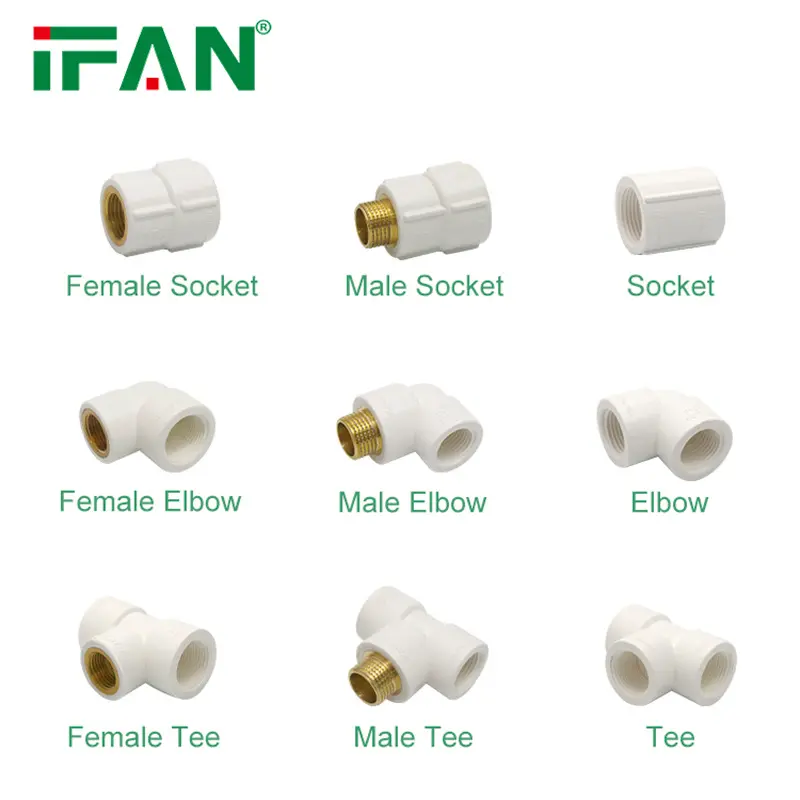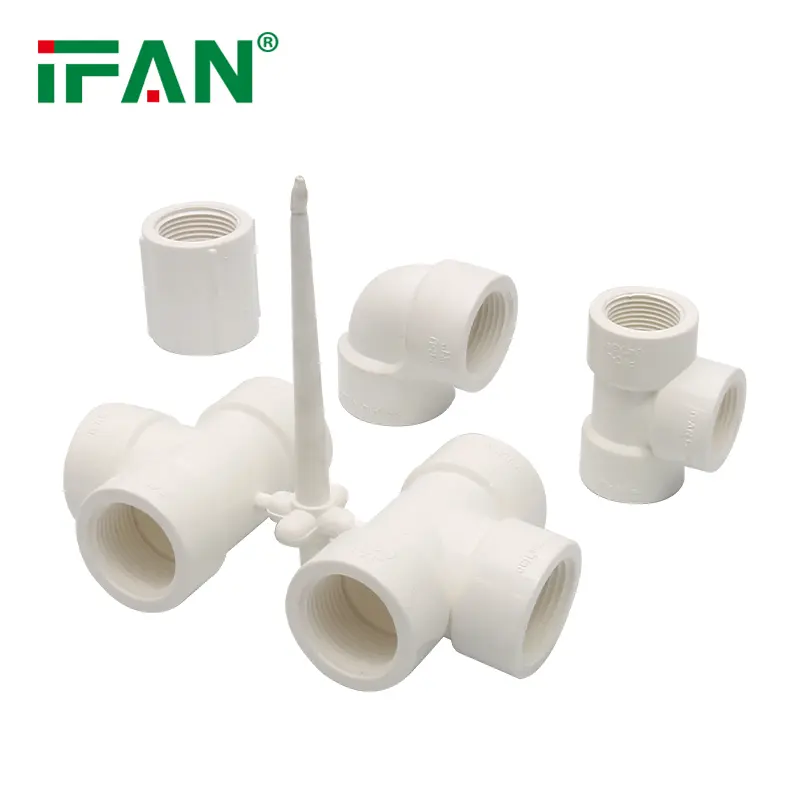UPVC (Unplasticized Polyvinyl Chloride) pipe fittings are widely used in various applications due to their durability, cost-effectiveness, and ease of installation. One crucial characteristic of these fittings is their temperature resistance. Understanding the temperature performance of UPVC pipe fittings helps in selecting the right components for different environments and ensures reliable system operation.
Material Composition and Basic Properties
UPVC is a type of rigid plastic made from polyvinyl chloride (PVC) without added plasticizers. This composition provides UPVC with significant strength and rigidity. However, it also influences how the material responds to temperature variations. Unlike some plastics, UPVC does not become flexible or soften at high temperatures. Instead, it maintains its form and rigidity under typical conditions.
Temperature Range for UPVC Pipe Fittings
UPVC pipe fittings are designed to operate effectively within a specific temperature range. Generally, UPVC fittings are suitable for temperatures up to 60°C (140°F). Beyond this temperature, UPVC can start to soften and lose its structural integrity. This makes UPVC pipe fittings suitable for cold and moderately warm water systems but less ideal for high-temperature applications.
High-Temperature Limitations
While UPVC pipe fittings perform well in cooler environments, their use in high-temperature scenarios is limited. For instance, hot water systems that exceed 60°C (140°F) are not recommended for UPVC fittings. In such cases, alternative materials like CPVC (Chlorinated Polyvinyl Chloride) or PEX (Cross-Linked Polyethylene) are often used due to their higher temperature tolerance.
Thermal Expansion and Contraction
UPVC exhibits thermal expansion and contraction properties. As temperatures increase, UPVC expands, and as temperatures decrease, it contracts. This characteristic is typical of most materials but requires consideration during installation. Proper allowances for expansion and contraction should be made to avoid stress on joints and connections, which could lead to leaks or system failure.
Impact of Temperature on Mechanical Properties
Temperature changes can affect the mechanical properties of UPVC pipe fittings. At lower temperatures, UPVC becomes more brittle, which may lead to cracking or breakage under stress. At higher temperatures, the material can become softer, reducing its load-bearing capacity and increasing the likelihood of deformation. It is crucial to ensure that UPVC fittings are used within their recommended temperature limits to maintain their mechanical integrity.
Temperature Resistance in Practical Applications
In practical applications, UPVC pipe fittings are often used in cold water supply systems, drainage, and irrigation. For example, in residential plumbing, UPVC fittings are commonly used for cold water distribution due to their resistance to corrosion and ease of installation. In industrial settings, UPVC fittings are used for transporting chemicals at lower temperatures where the fittings’ chemical resistance outweighs the temperature limitations.
Installation Considerations
During installation, it’s essential to account for temperature variations. For example, if UPVC pipe fittings are installed in environments subject to temperature fluctuations, special care should be taken to avoid exceeding the recommended temperature limits. Insulation may be used to protect the fittings from extreme temperatures, particularly in outdoor or unheated areas.
Temperature Effects on Long-Term Performance
Long-term exposure to temperatures close to or beyond the maximum limits can affect the longevity and performance of UPVC pipe fittings. Prolonged high temperatures can accelerate material degradation, leading to brittleness and eventual failure. Therefore, regular inspection and maintenance are recommended to ensure that UPVC fittings remain in good condition throughout their service life.
Comparing with Other Materials
Compared to metals and other plastics, UPVC has lower temperature resistance. For instance, CPVC can handle temperatures up to 90°C (194°F), making it more suitable for hot water systems. PEX, another alternative, can withstand temperatures up to 95°C (203°F). Choosing the right material based on temperature requirements is crucial for the reliability of a piping system.
Case Studies and Examples
1. Residential Plumbing: In residential plumbing, UPVC pipe fittings are commonly used for cold water lines. In these systems, temperatures typically remain within the acceptable range for UPVC. For example, a UPVC fitting used in a cold water supply line will function effectively and maintain its integrity over time.
2. Agricultural Irrigation: In agricultural irrigation systems, UPVC fittings are used to transport water from sources to fields. These systems often operate in cooler temperatures or at moderate temperatures that do not exceed the limits of UPVC fittings, ensuring reliable performance.
3. Industrial Applications: In some industrial applications, UPVC fittings are used for chemical transportation at lower temperatures. For instance, a UPVC fitting used in a chemical process that operates at ambient temperatures will perform reliably, provided the temperature does not exceed the material’s limits.
Maintenance and Monitoring
To ensure the ongoing effectiveness of UPVC pipe fittings, regular maintenance and monitoring are necessary. Check for signs of temperature-induced stress, such as warping or cracking. In areas prone to temperature extremes, consider installing temperature monitoring systems or insulation to protect the fittings.
Conclusion
UPVC pipe fittings offer reliable performance for applications within their specified temperature range. Their temperature resistance makes them suitable for cold and moderately warm environments. Understanding the temperature limitations and effects on mechanical properties is essential for selecting the right fittings and ensuring system longevity. By considering these factors, users can make informed decisions and maintain the efficiency and reliability of their piping systems.
If you have read this article and have any questions, please feel free to contact IFAN. Below is our contact information:
Whatsapp:+86 13373827623
Email:[email protected]
























































